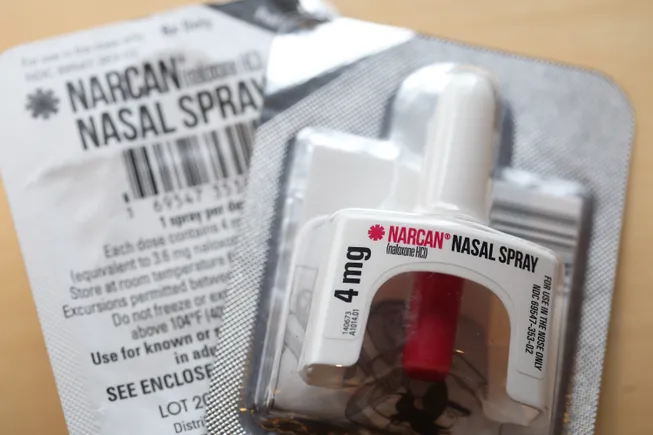Vince Saavedra is the executive secretary-treasurer of the Southern Nevada Building Trades Unions. Opinions are the author’s own.
When people think about the potential dangers of working on a construction site, falling off scaffolding or being injured or killed by heavy machinery are typically the situations that come to mind. To be sure, these are all very real risks. Data from the Bureau of Labor Statistics shows that construction workers already face the highest number of fatal work injuries compared to any other profession.
However, according to a study last year by the Centers for Disease Control and Prevention, drug overdoses, primarily from synthetic opioids like fentanyl, take more construction workers’ lives than anything else. It’s time to shine a light on this hidden crisis and ensure that all overdose treatments are available where they’re needed most.

Vince Saavedra
Permission granted by Southern Nevada Building Trades Unions
Some workers in construction and other labor-intensive fields, especially those on short-term contracts, already start off with a disadvantage; poor health coverage and little paid time off, if any, to recover from injuries. Driven by the initial need to quickly return to work, pain management through self-medication can easily spiral into addiction and death.
And, as I mentioned, overdoses are more deadly than the hazardous work on the job. In 2020, the BLS reported an at-work fatal injury rate for construction and extraction occupations of 13.5 deaths per 100,000 workers. That same year, the CDC reported that the group saw 162.6 drug overdose deaths per 100,000 workers.
The challenges of trying to save lives and fight the stigma of drug addiction are enormous in an industry where physical injury is common, but making solutions and help more available can save lives.
Unseen workers deserve more respect
Since 2016, deaths in the U.S. from synthetic opioids such as fentanyl have more than tripled and, in 2022 more than 200 people died nationally every day from a synthetic opioid overdose. Yet, access to synthetic opioid-specific overdose reversal medications — such as Narcan — is still blocked in some states.
The Food and Drug Administration has already approved overdose rescue agents designed to counter fentanyl. However, because of bureaucratic delays and paperwork, these lifesaving tools are not always reaching the frontline workers who need them. Each state must issue its own individual policy or standing order to allow access and availability to FDA-approved products, like reversal agents for synthetic opioid overdoses, but not all states have done so.
My home state of Nevada has already taken steps to update our statewide policy to enable access to all overdose reversal tools, but our union brothers and sisters in several states are still waiting for policymakers to take this step.
The construction industry has higher than average rates of recreational and non-prescription drug use, so the risk for unintentional overdoses is already high. Used in the production of counterfeit pharmaceuticals like OxyContin, fentanyl is a lethal but cheap ingredient that’s 50 times stronger than heroin and 100 times stronger than morphine, per the CDC.
Each day, individuals in labor and construction roles build the very world we inhabit, yet often remain unseen. They deserve the same respect, dignity and support as our own loved ones and friends. Ensuring that the most innovative and effective opioid reversal agents are available in every state is an important start.

